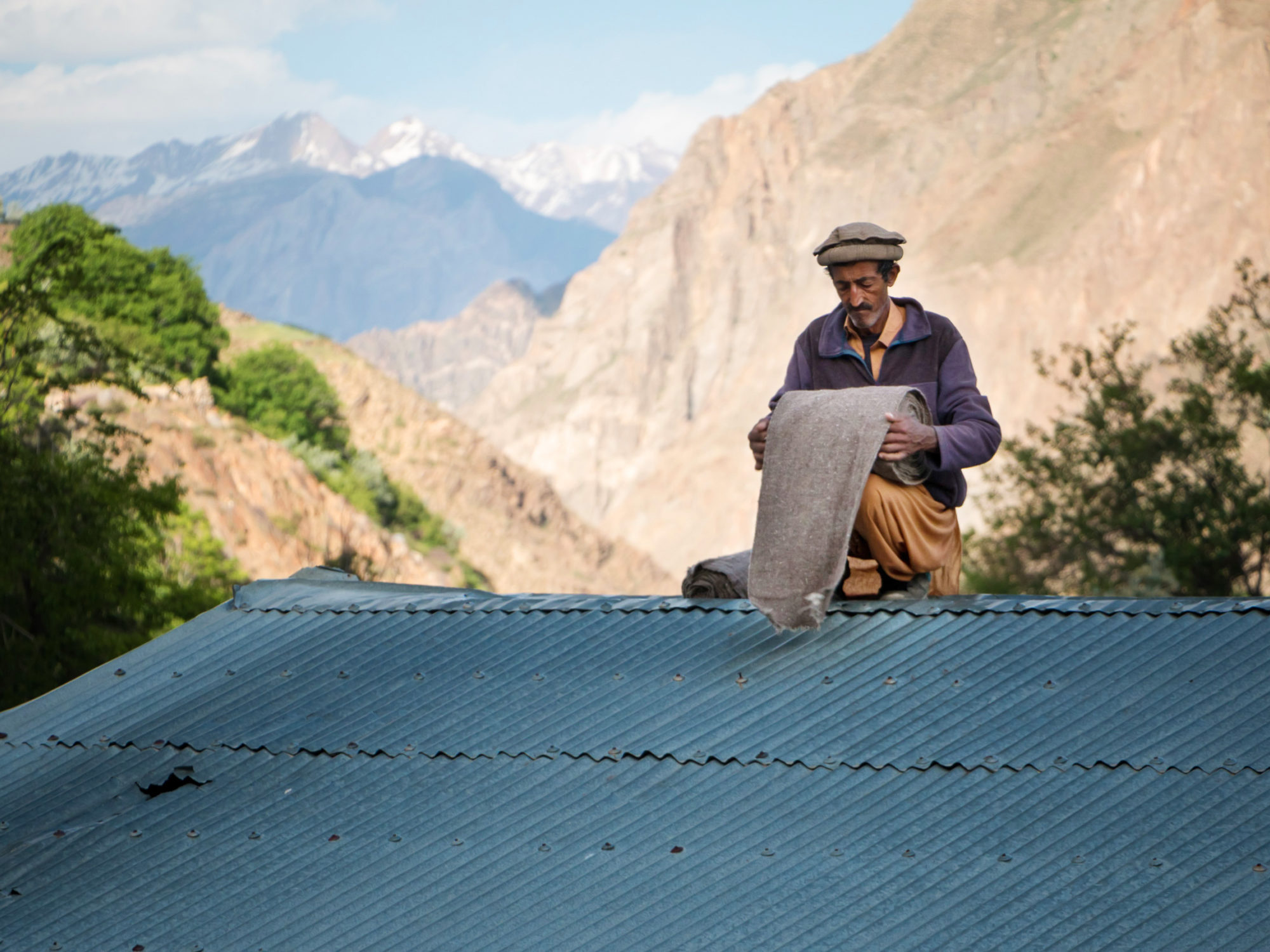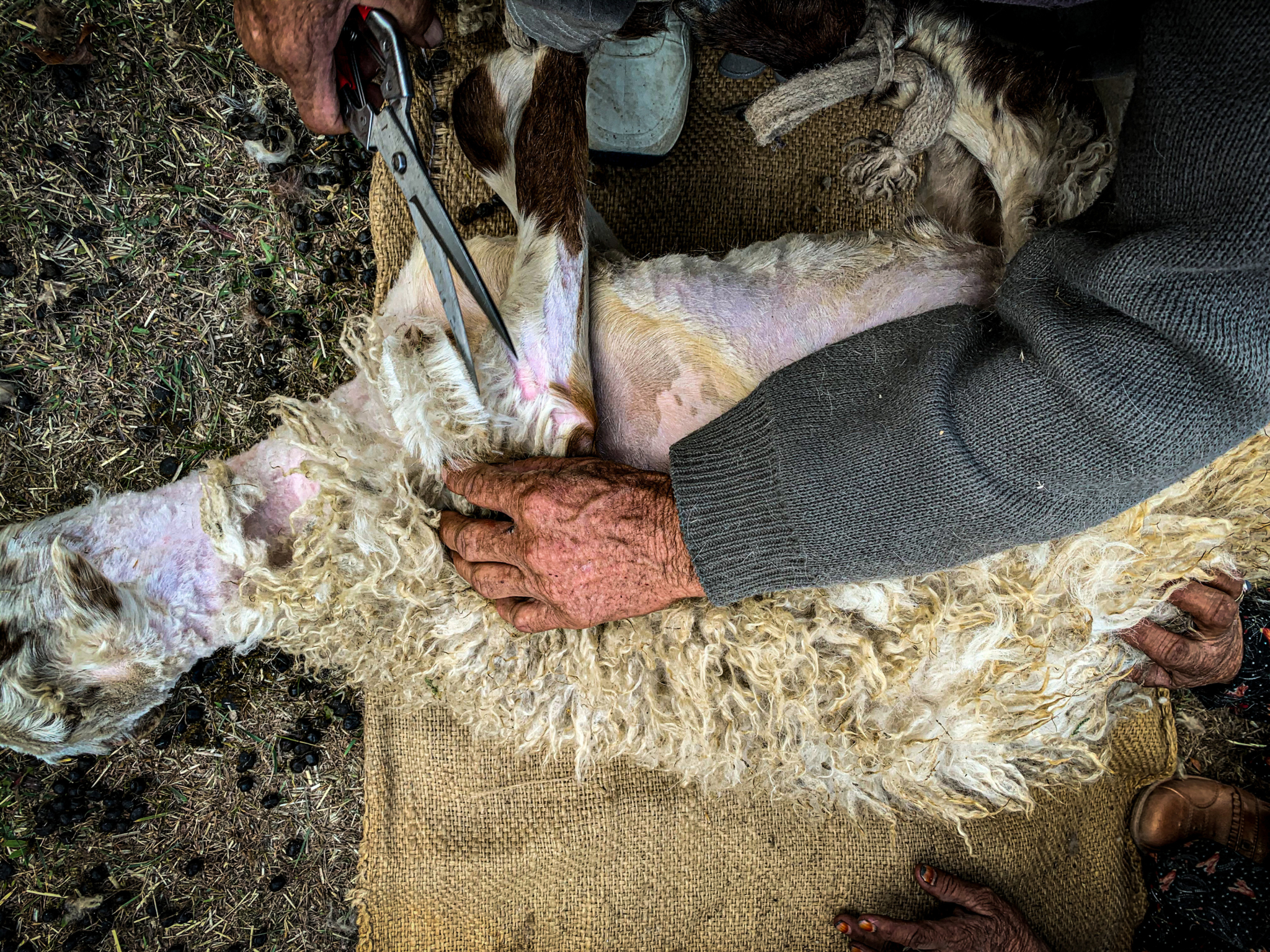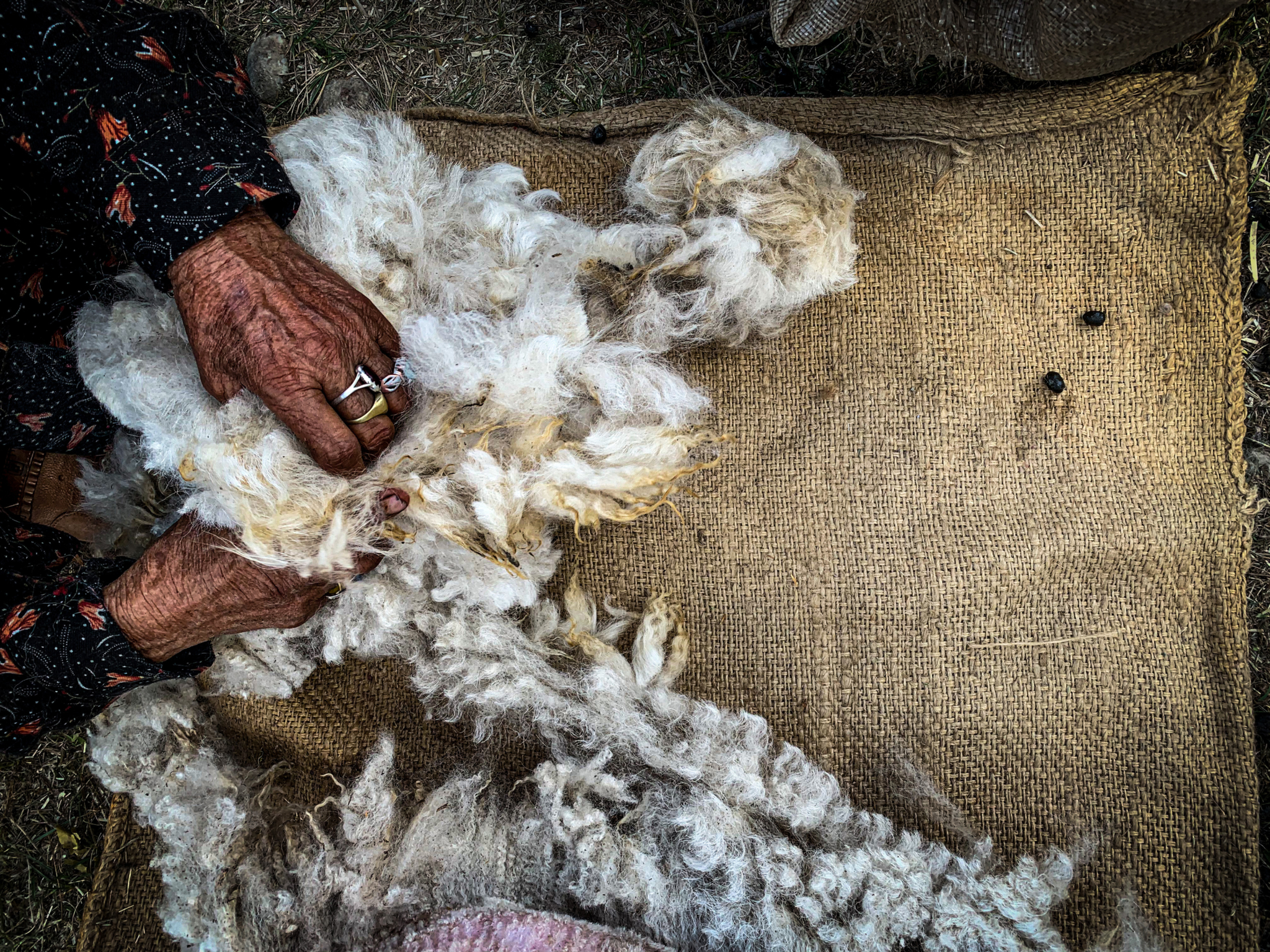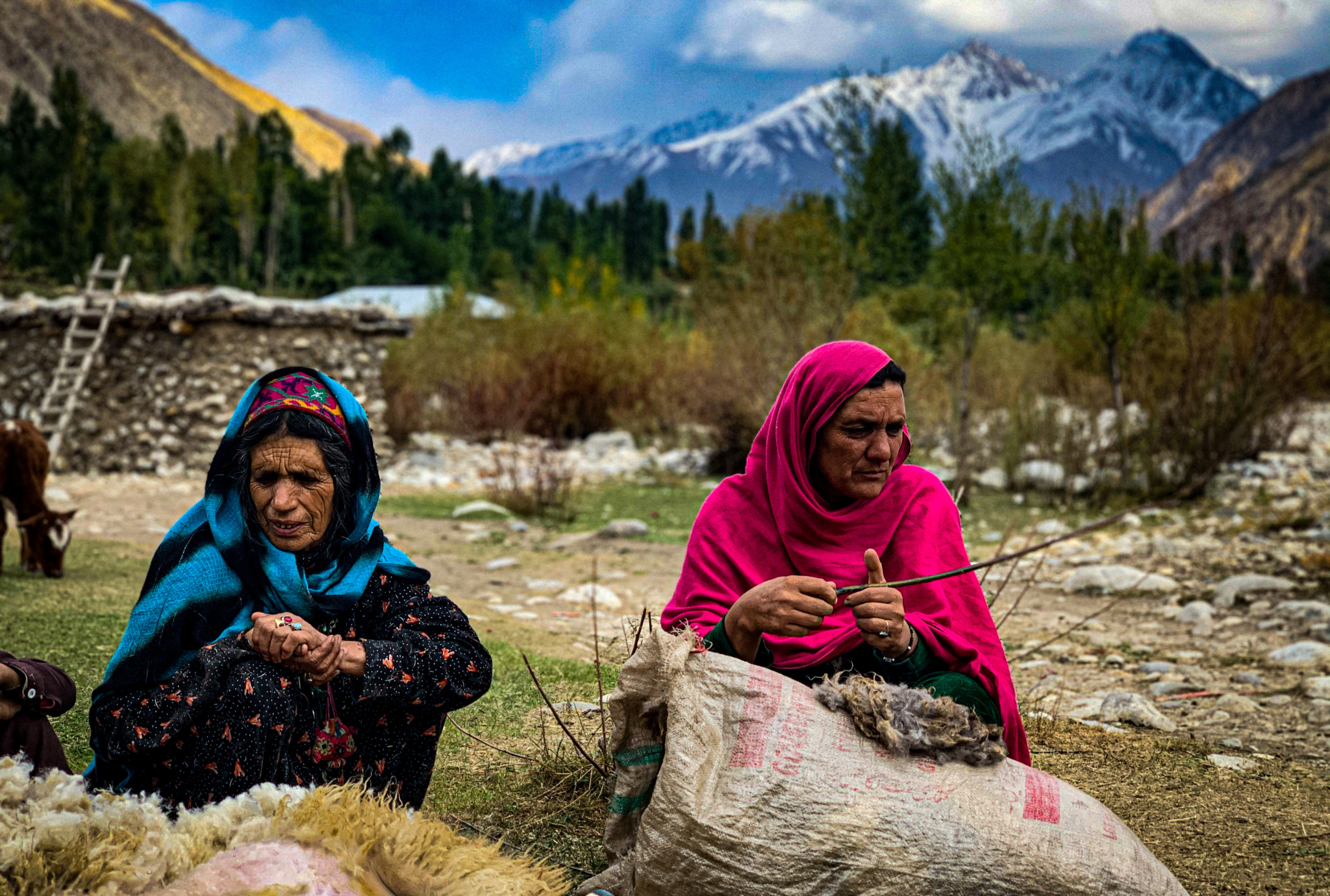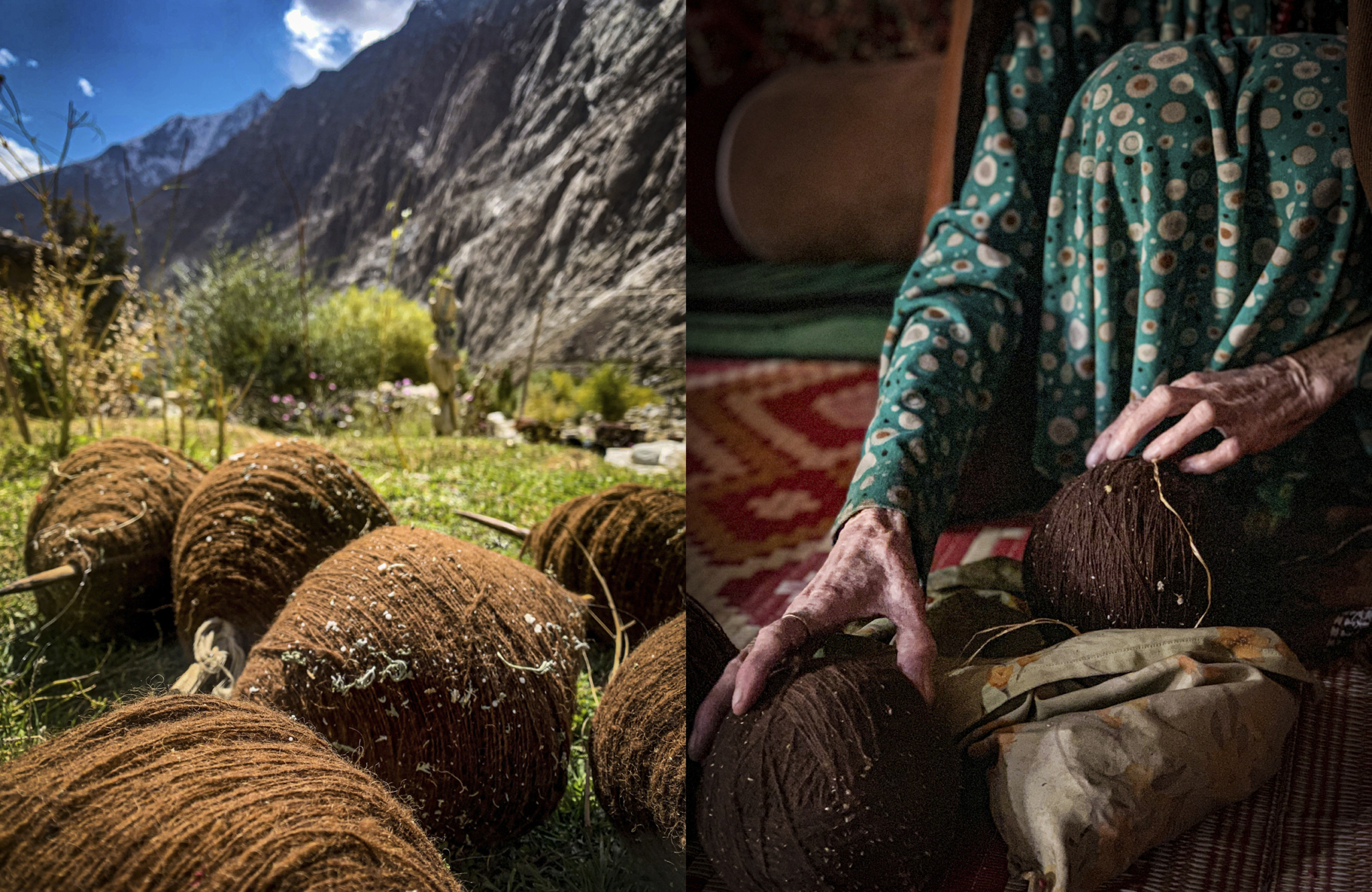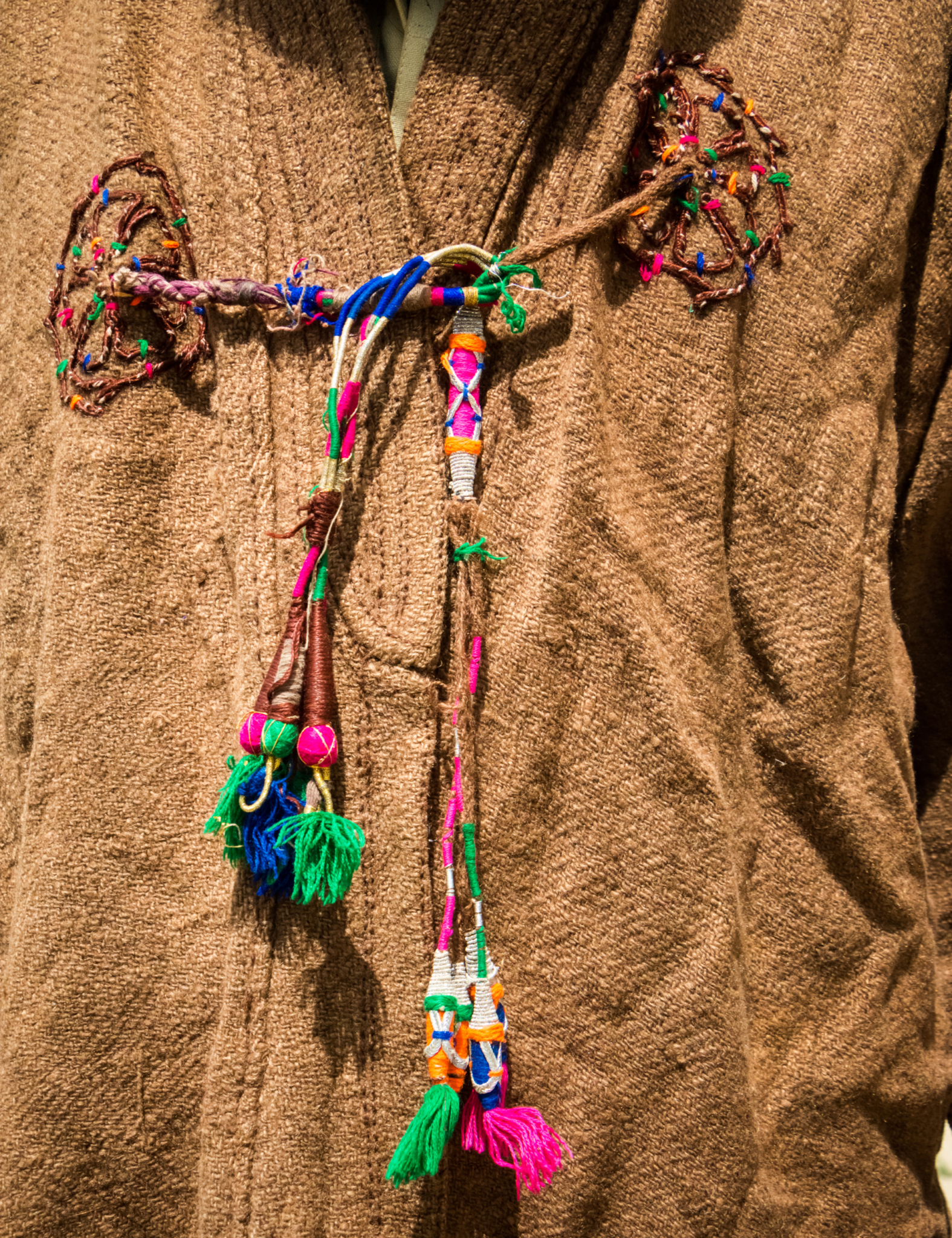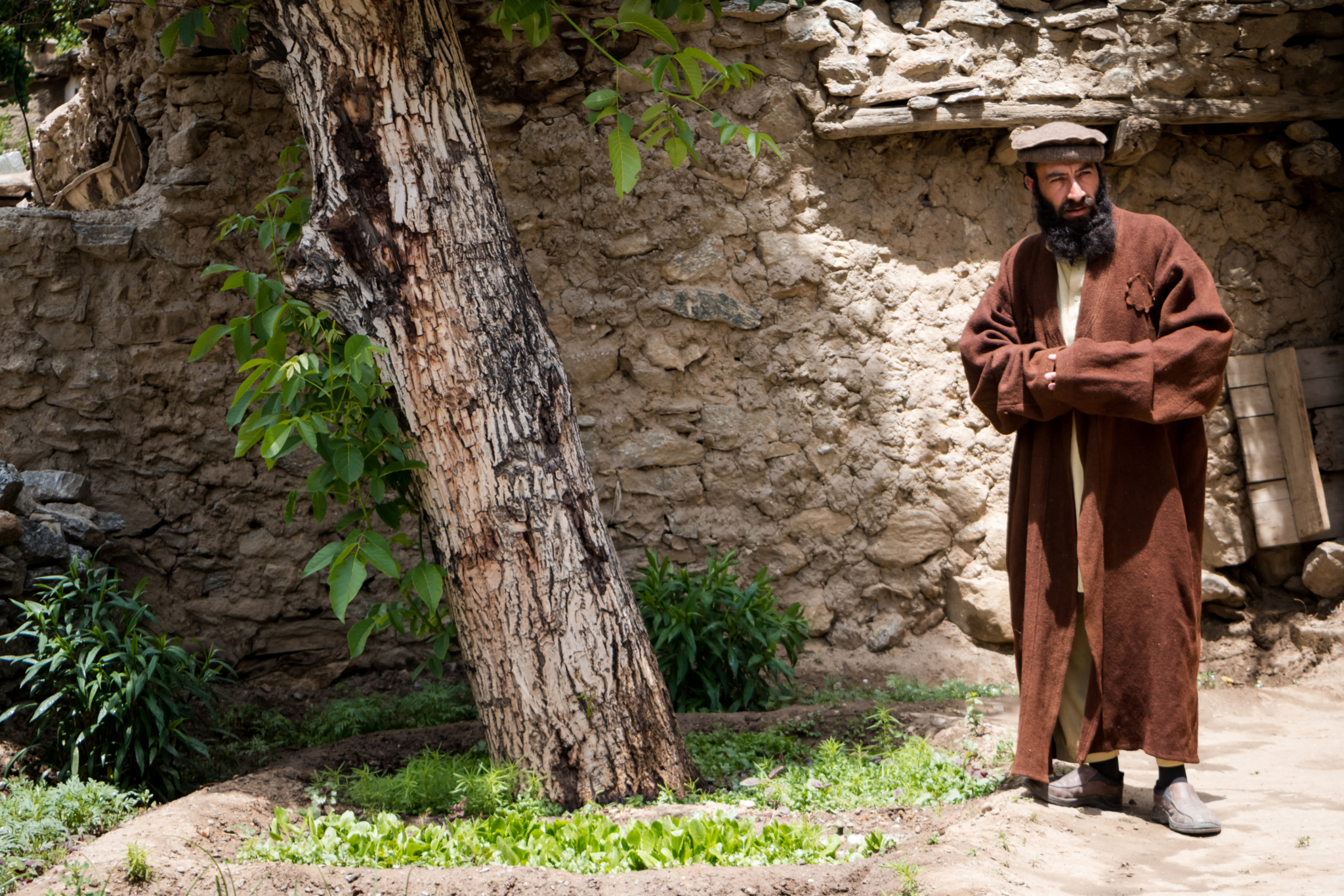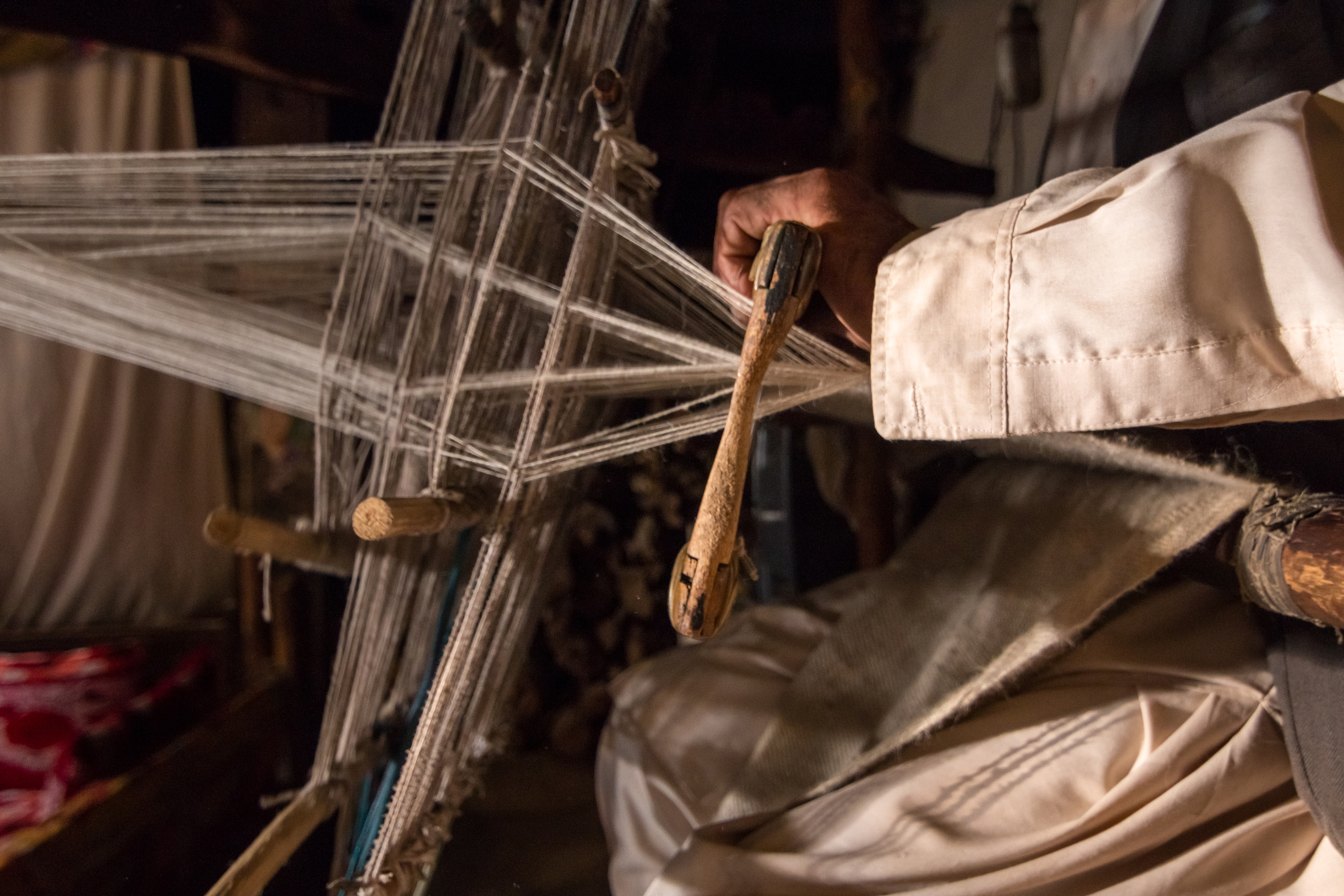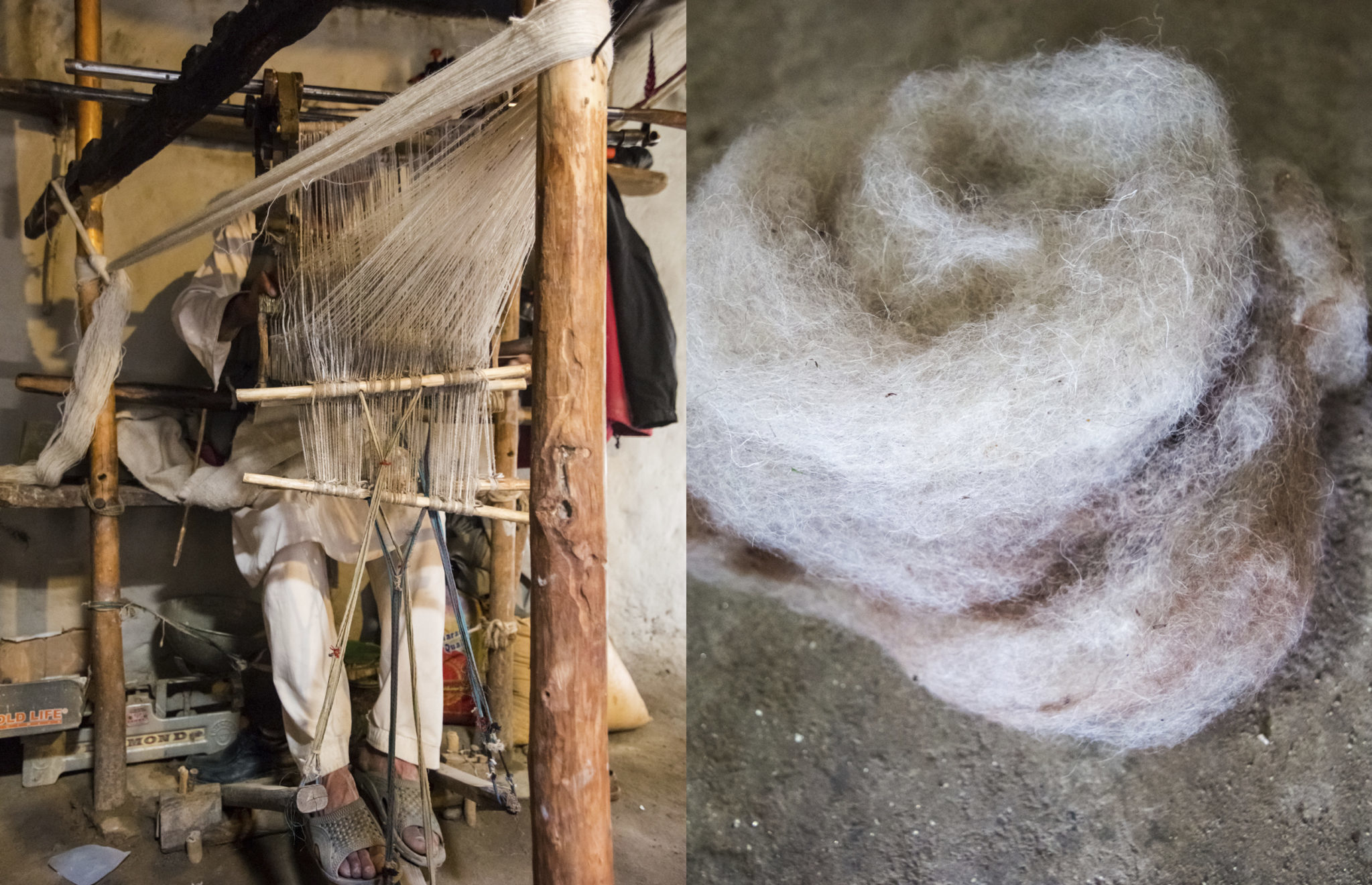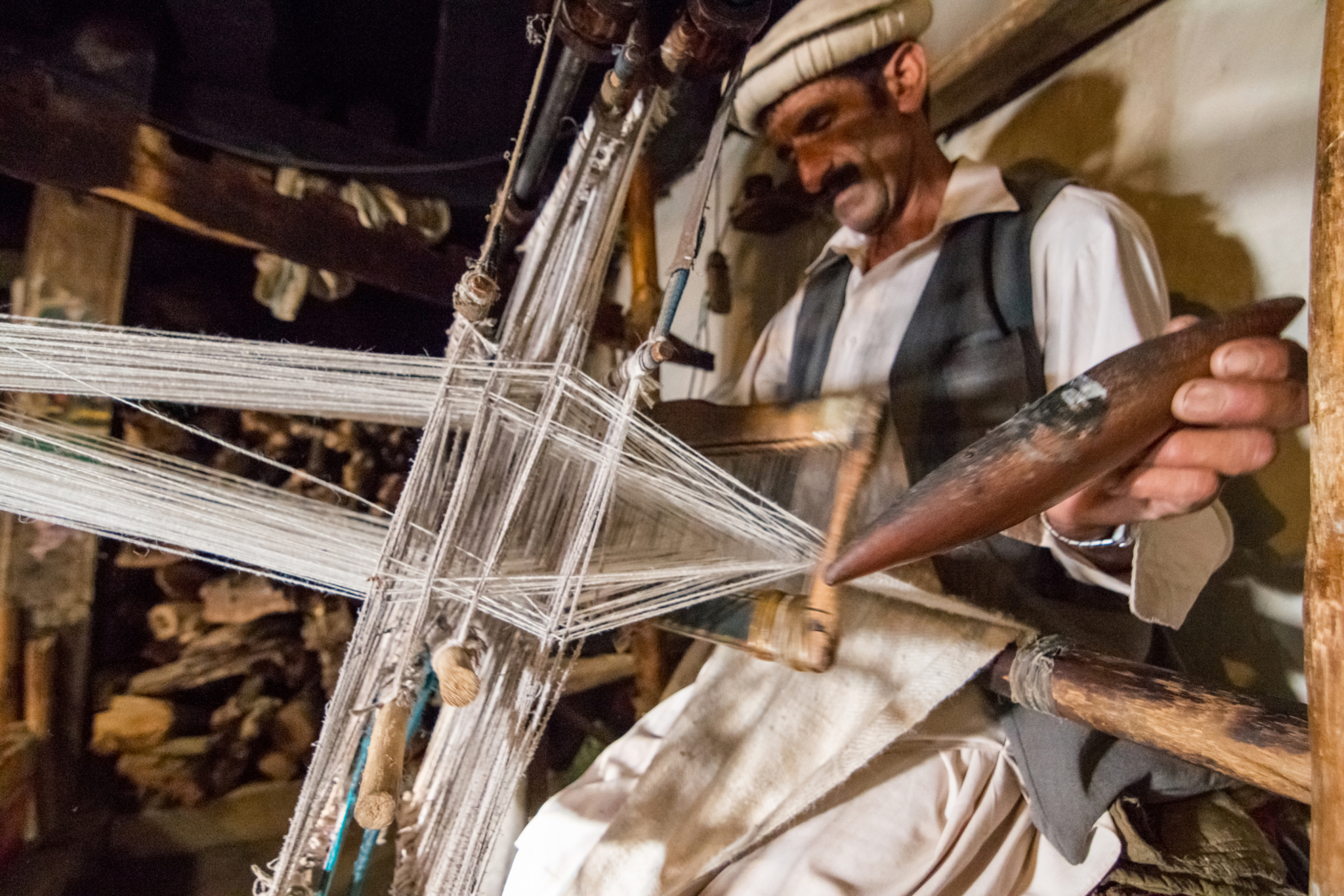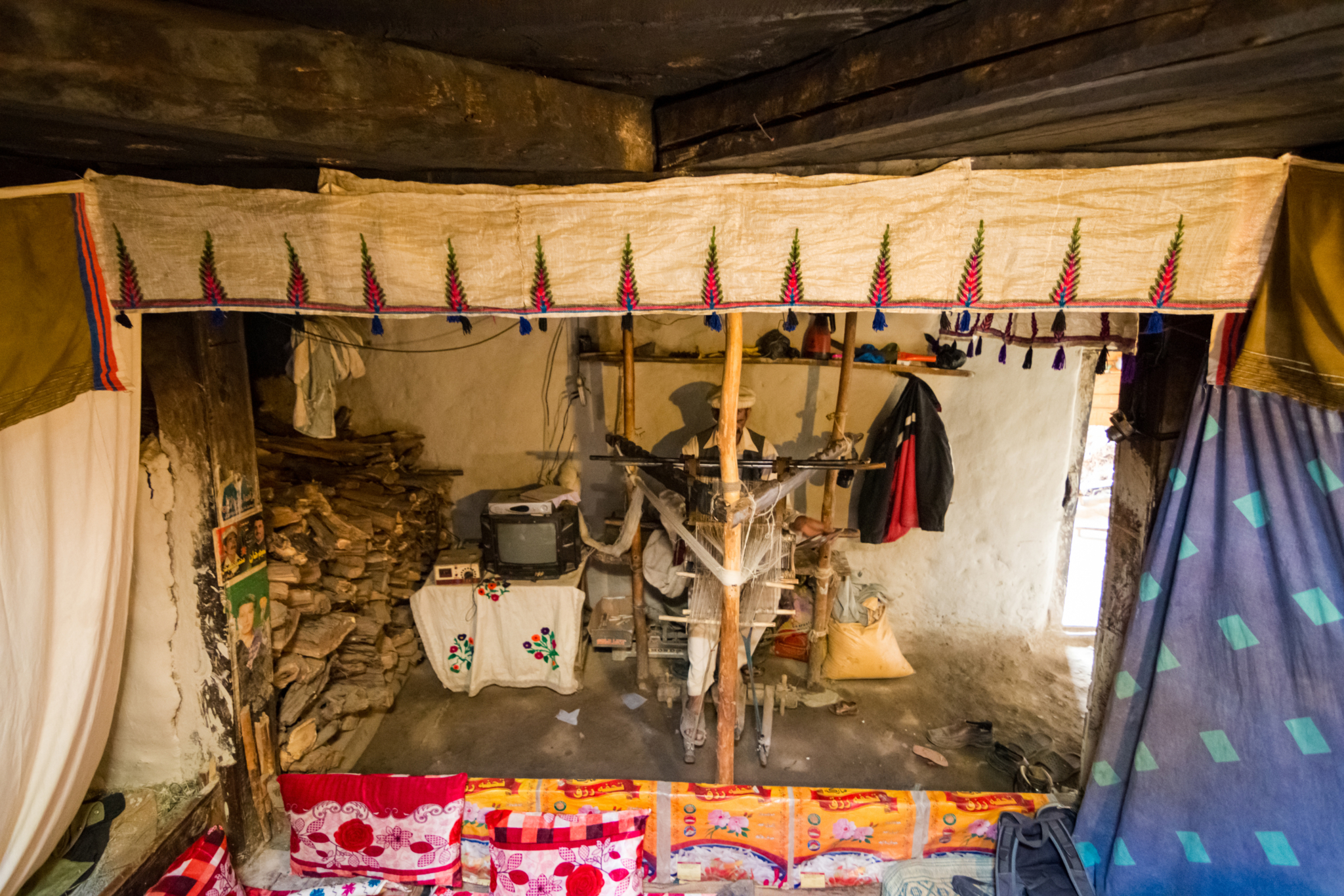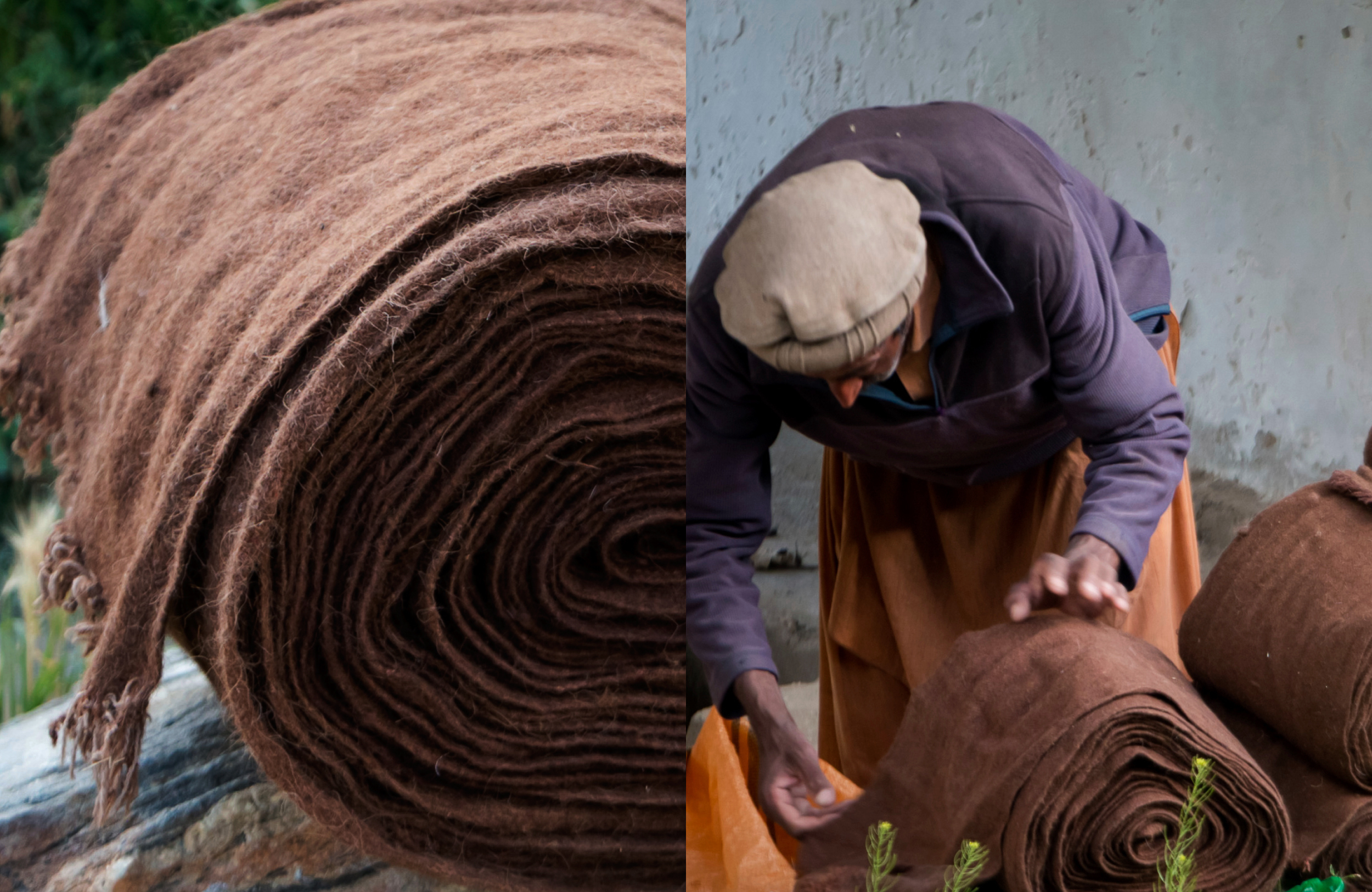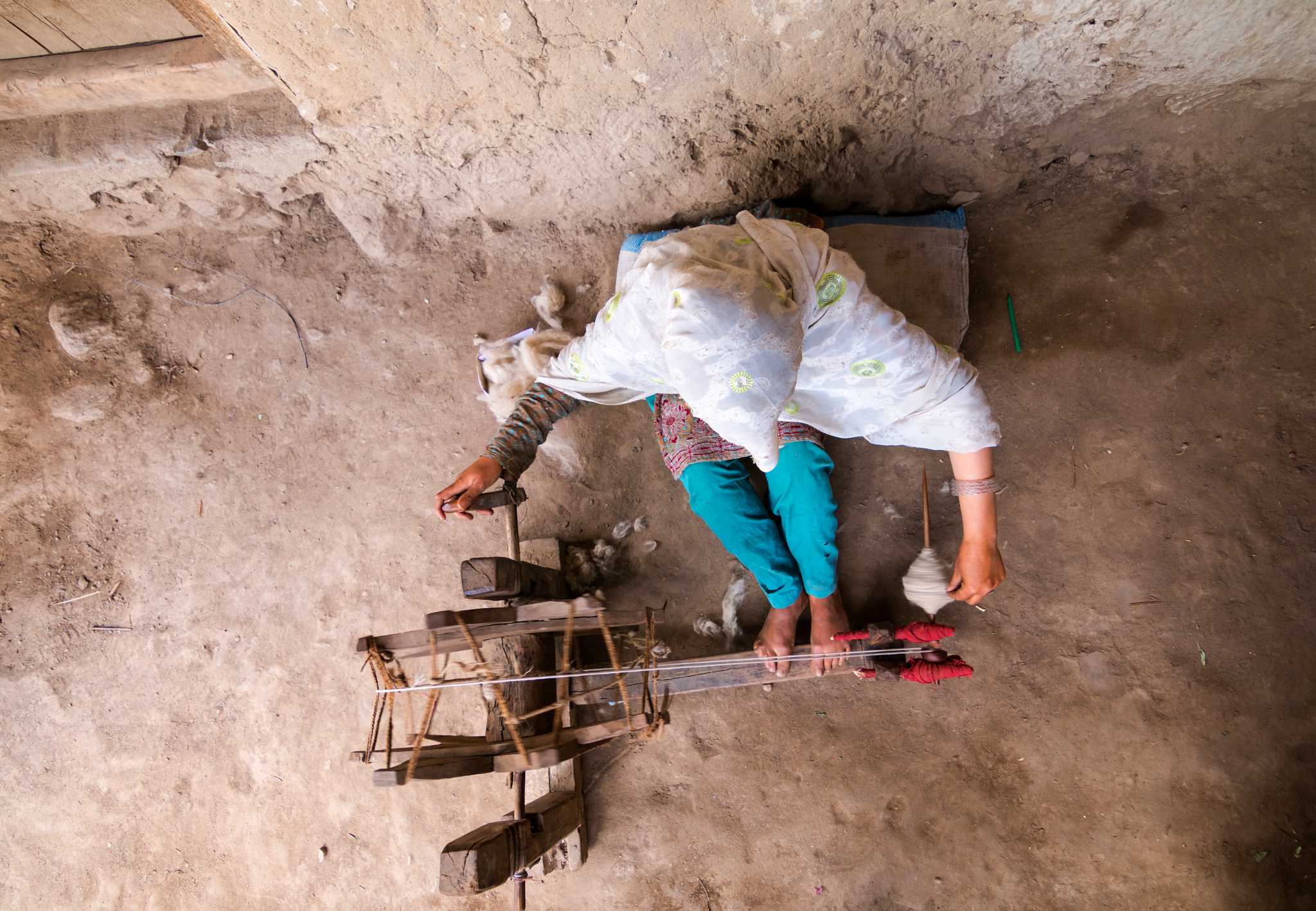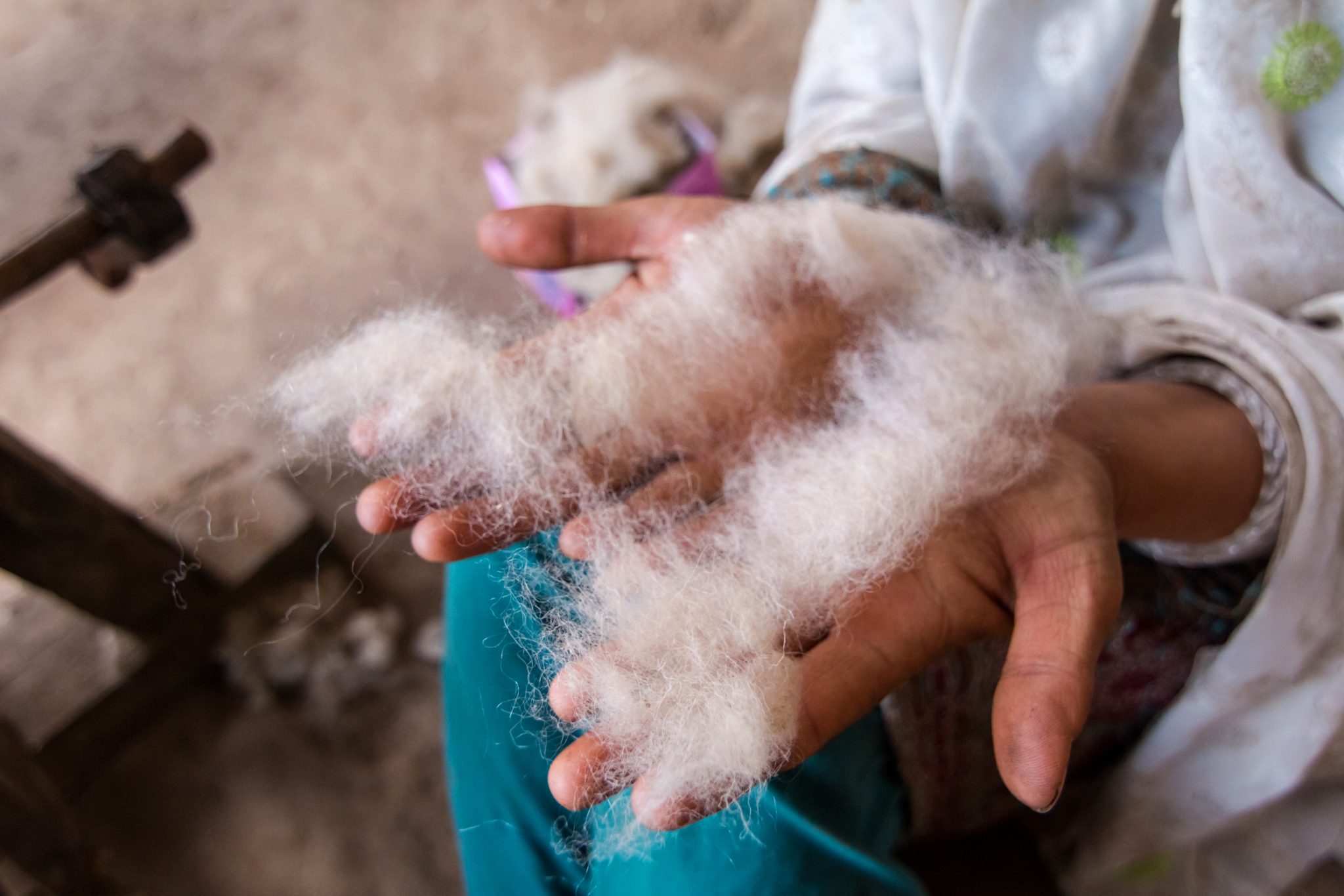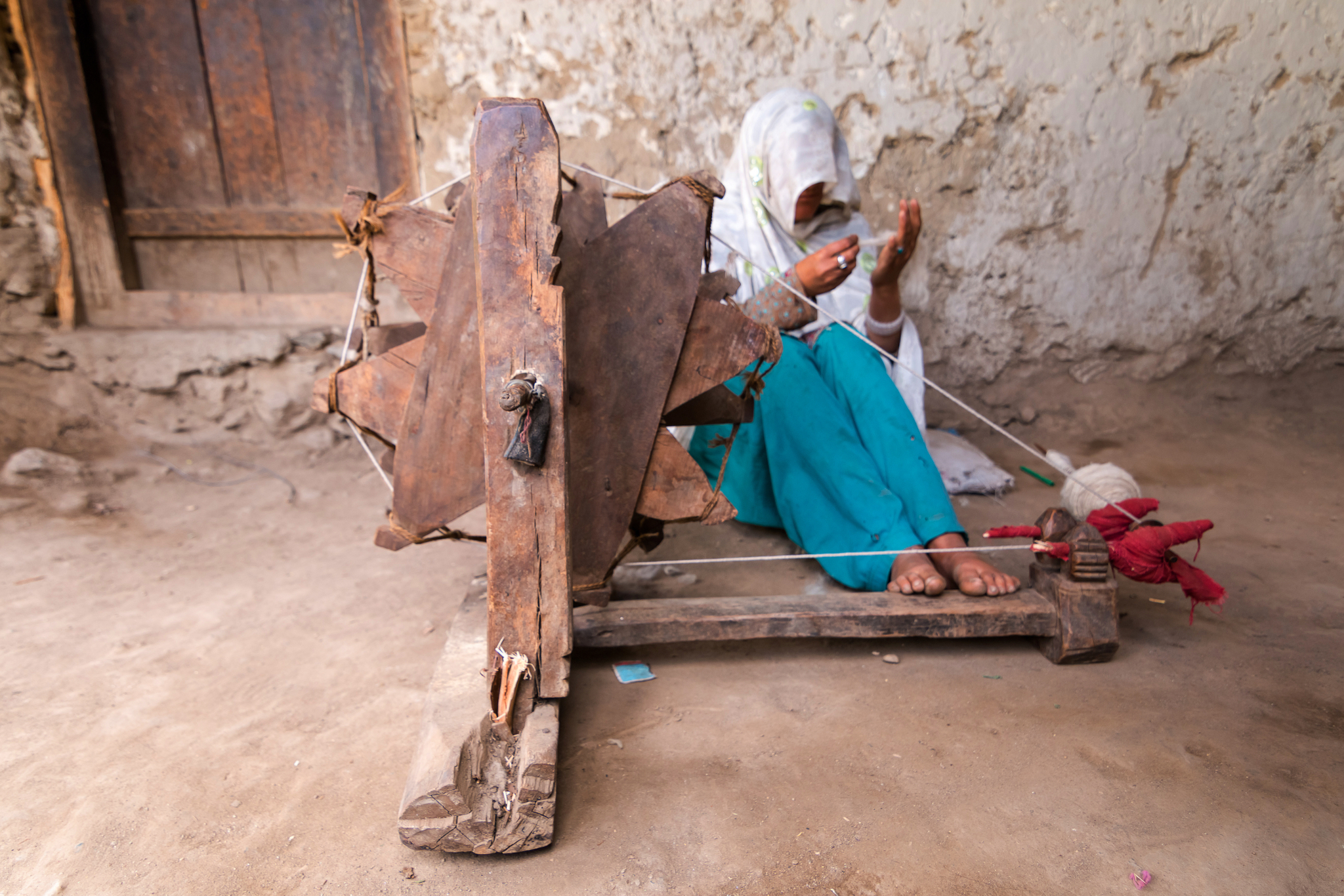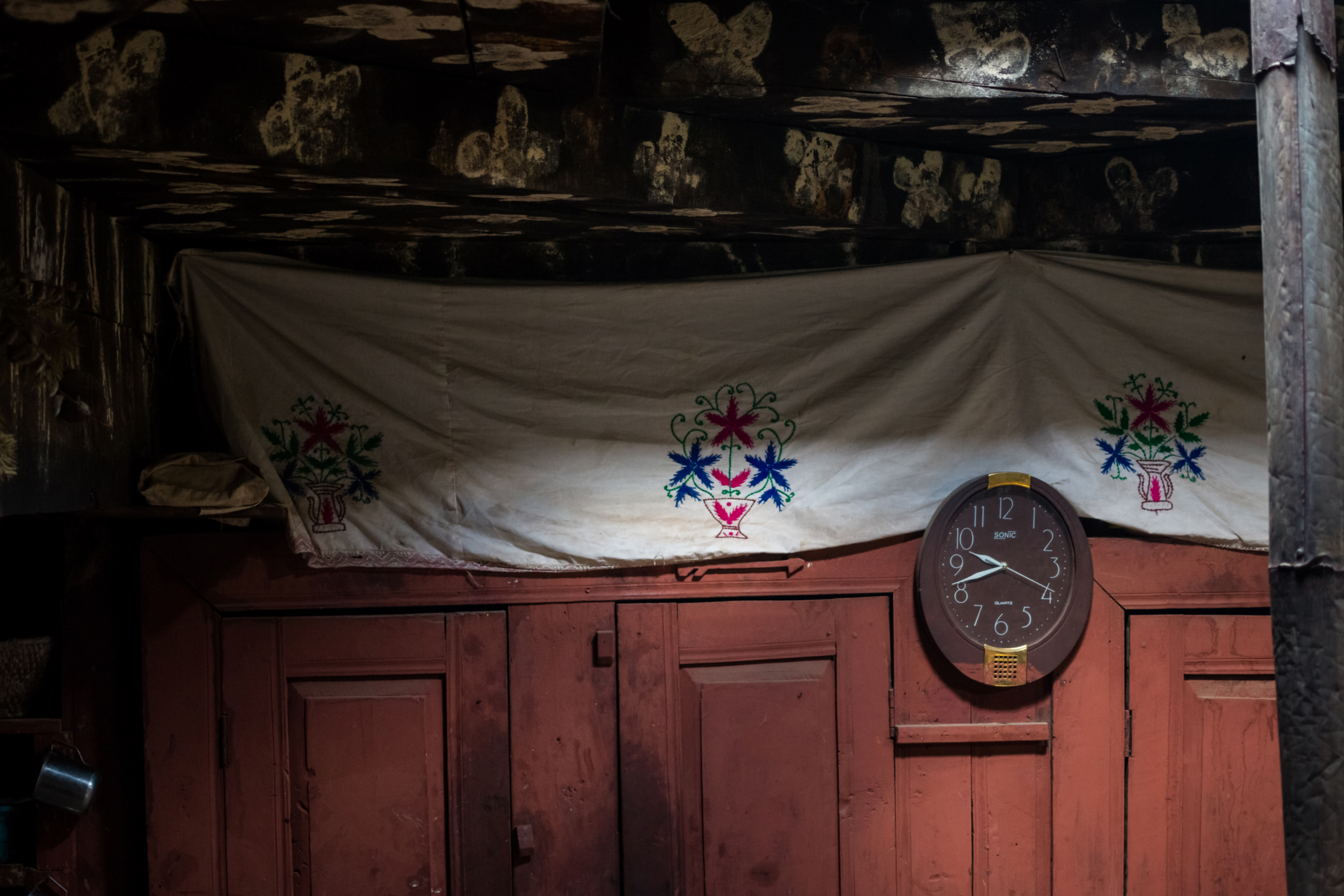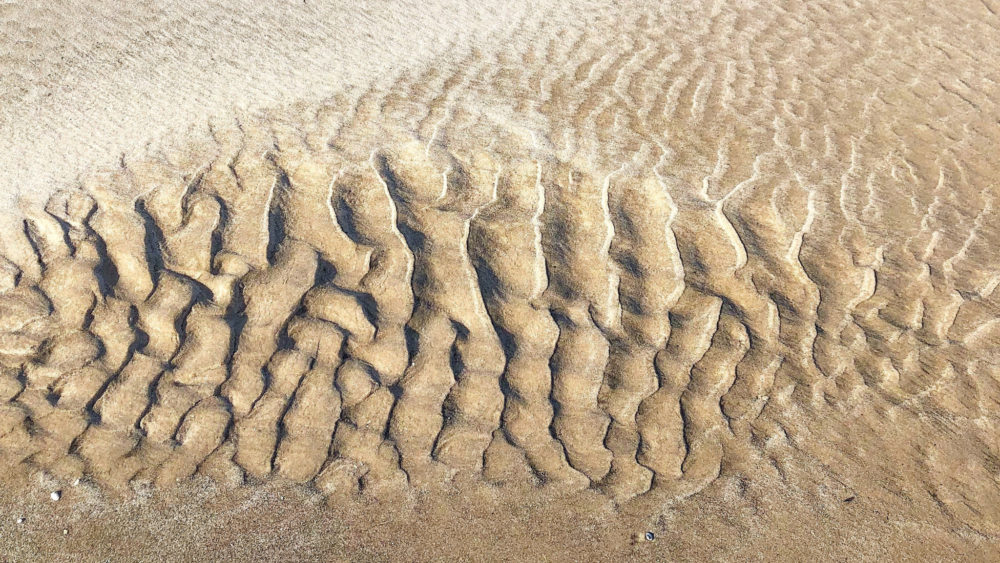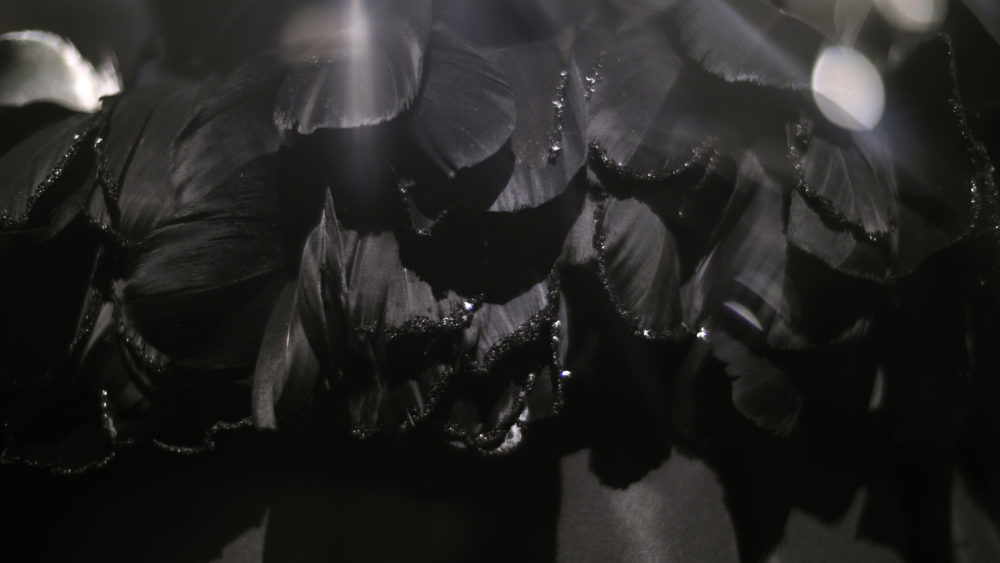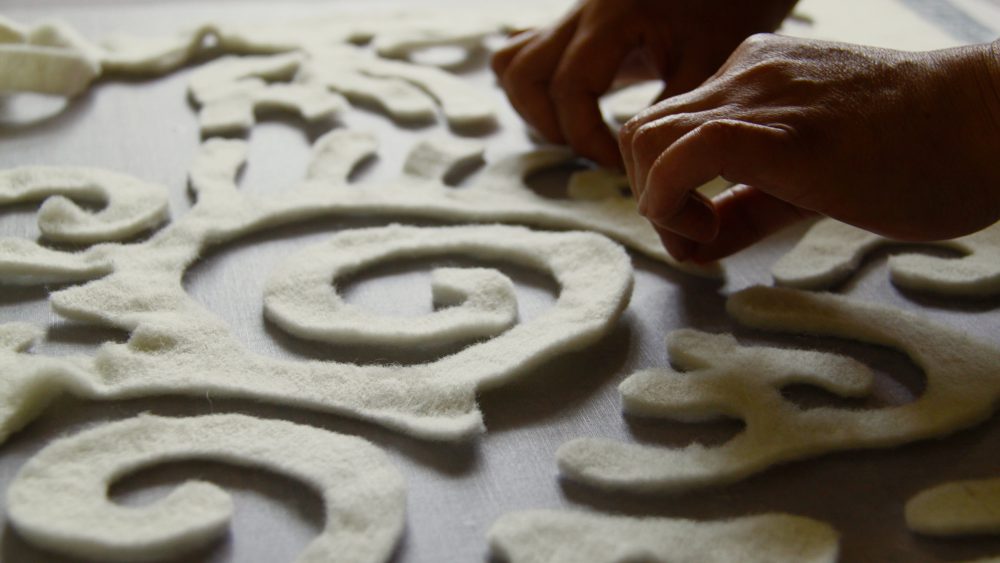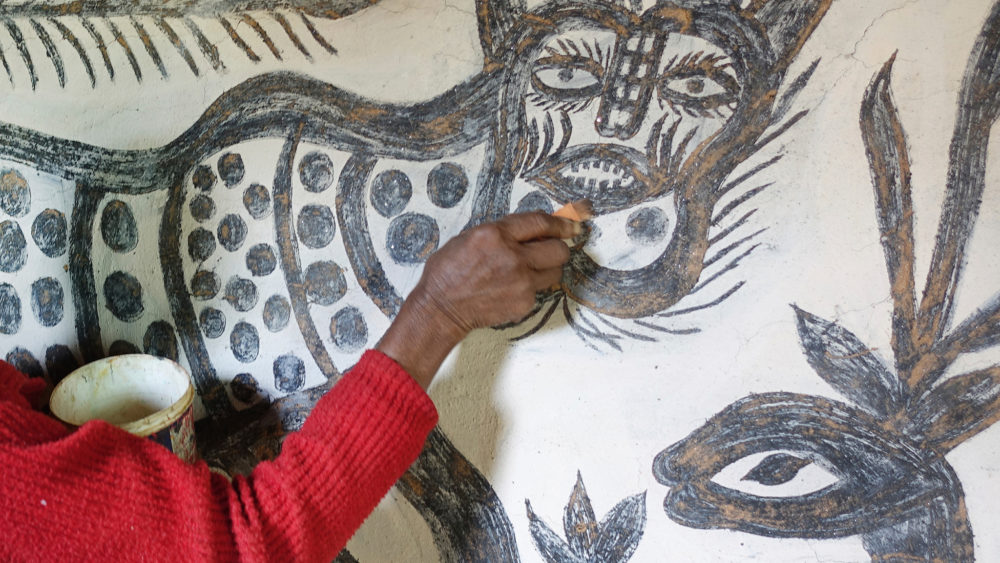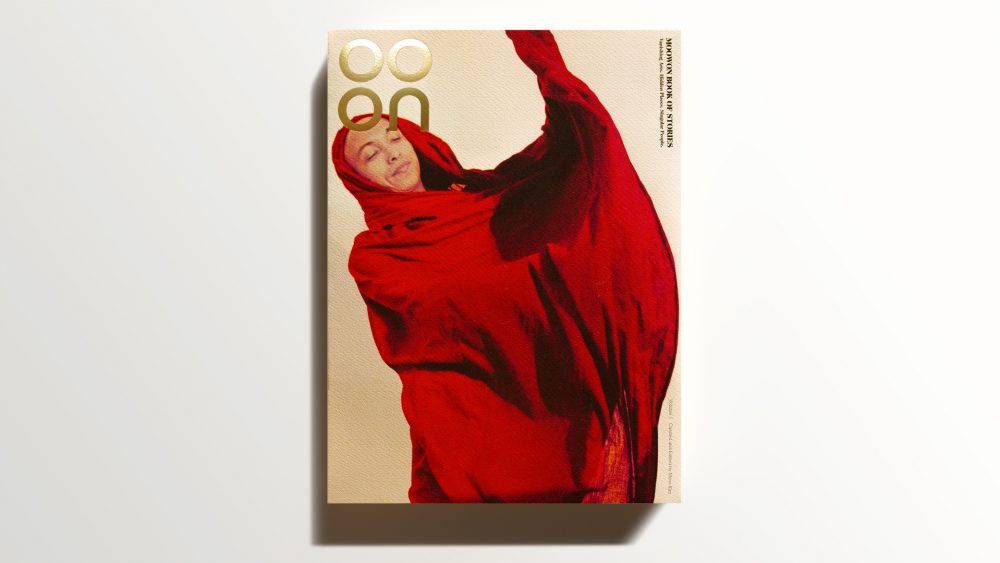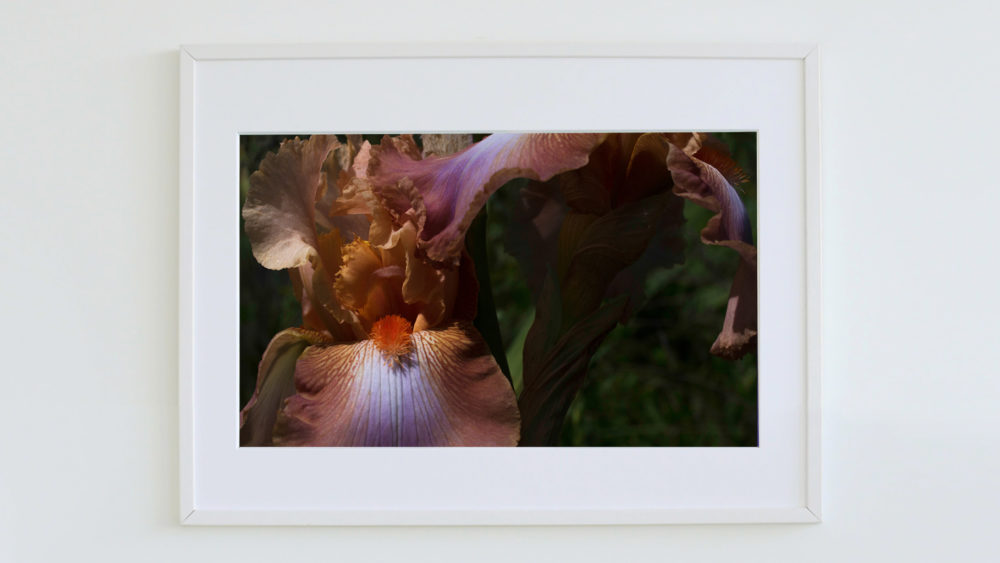In a faraway corner of North-West Pakistan, nestled in a geopolitical corridor connecting Afghanistan, Tajikistan and the East Turkistan region of Northwest China (Xinjiang), lies Chitral Valley. As you enter the “land of fairies”, also known as Peristan, you pass through trees of walnuts and mulberries; the achromatic hues of the high foothills; and the hovering accents of pomegranates and apricots that camouflage markhors.
In High Asia, the Kirghiz and Wakhi pastoralists of Pamir and Wakhan have retained the traditional skills of spinning and weaving. The art of Chitrali Shu making is a continuation of Central Asian traditions that have been passed on from generation to generation.
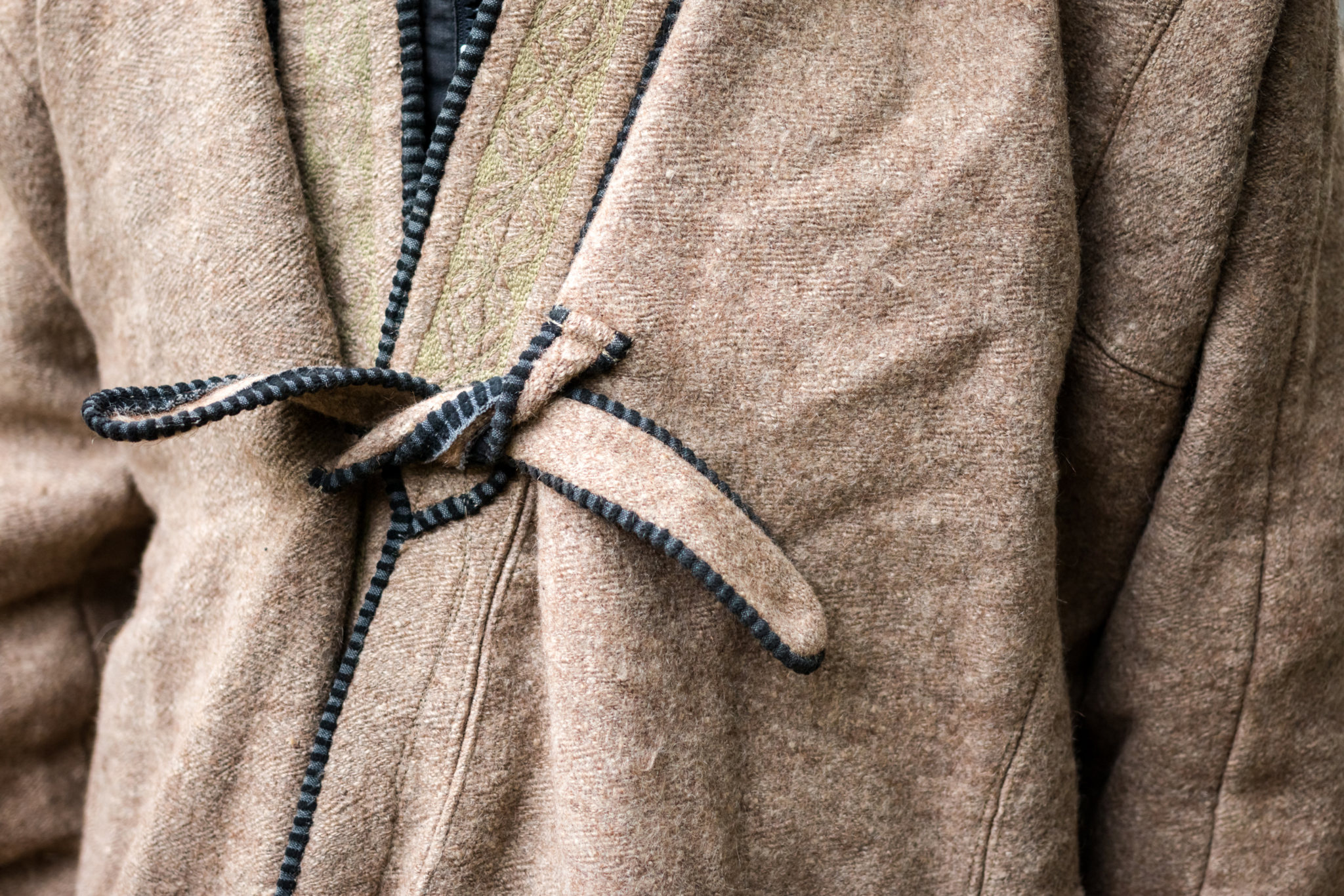
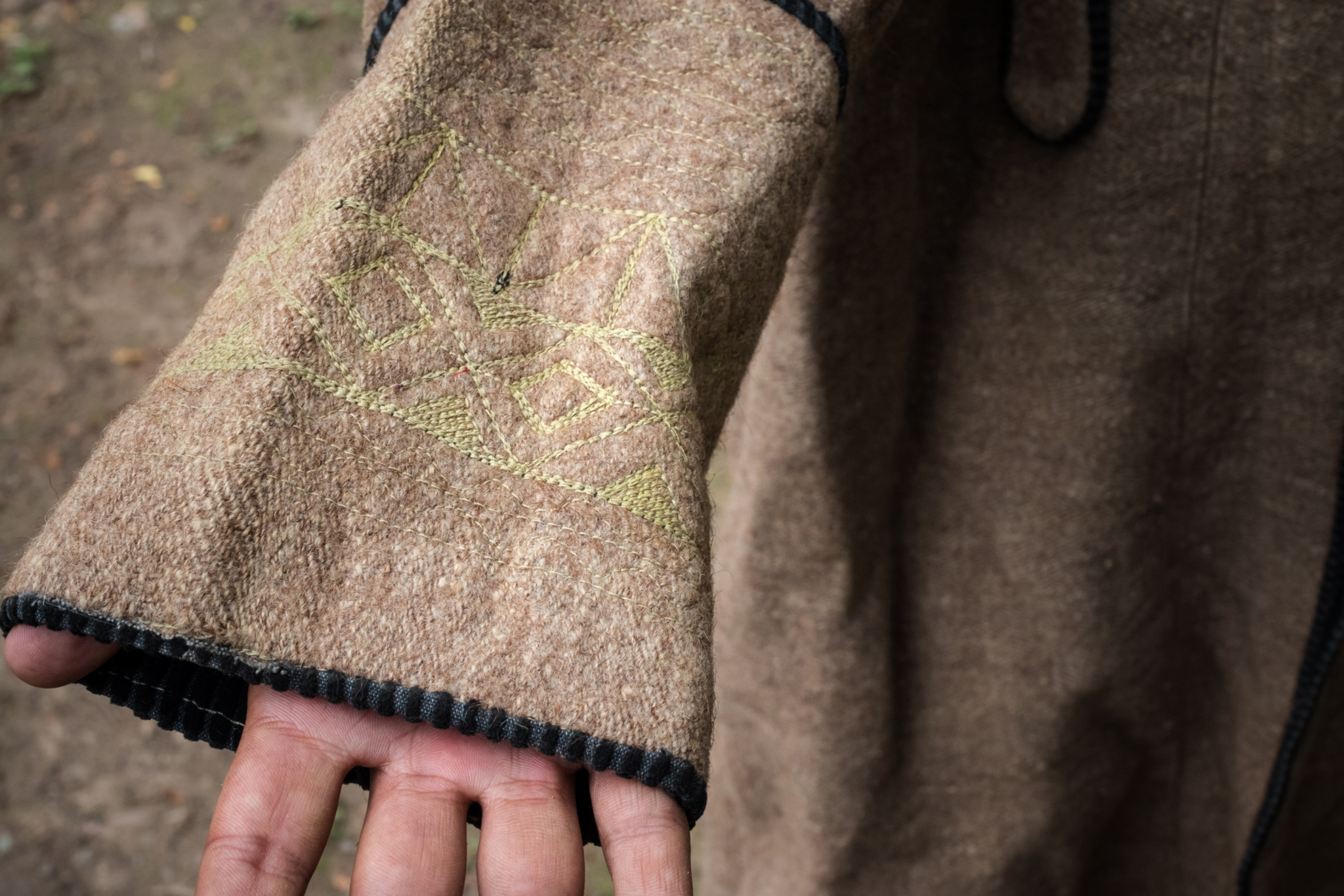
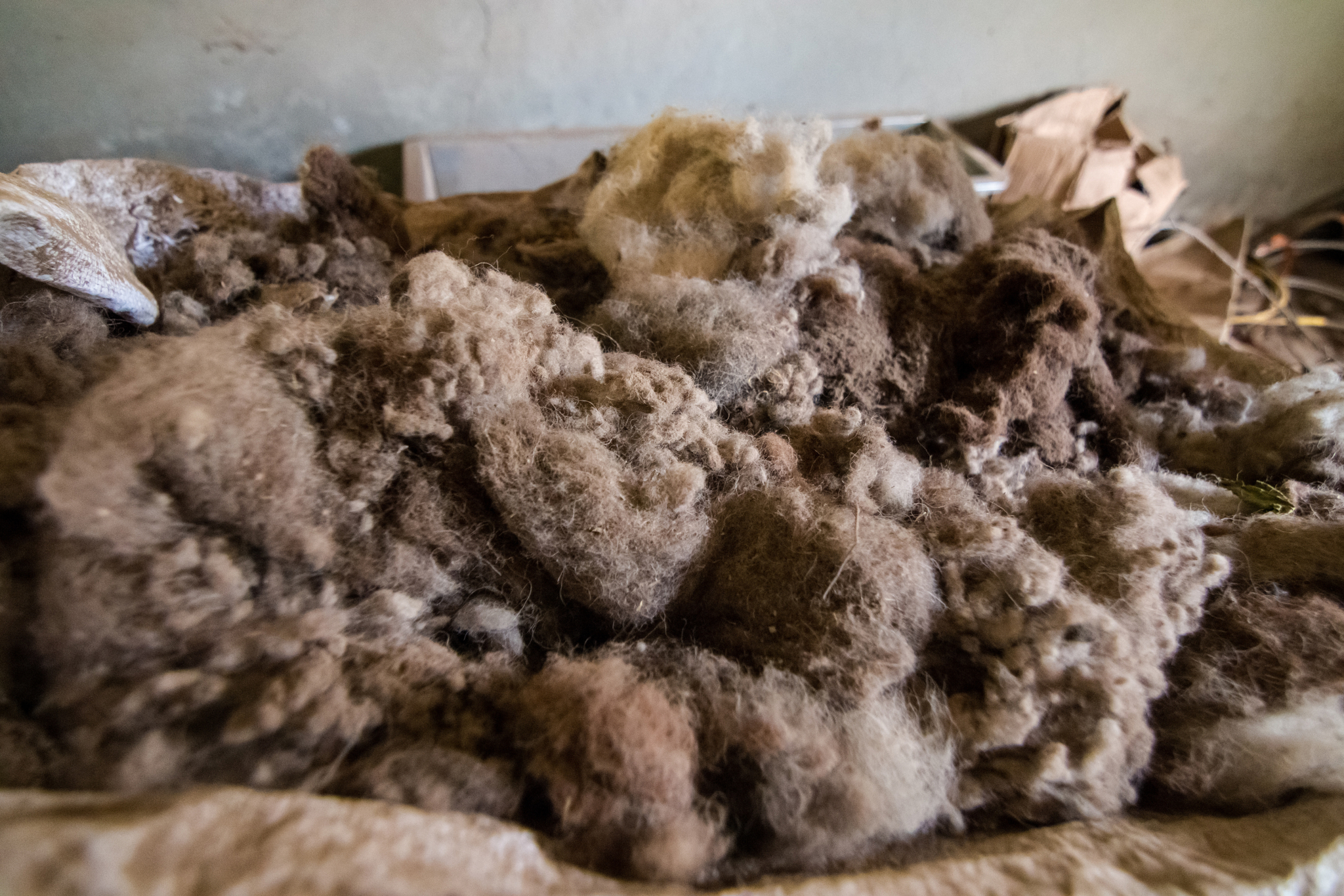
For centuries, the women from the mountainous villages of Chitral Valley have spun wool into yarn to be woven into the windproof fabric called Shu which is also known as patti. Chitrali Shu is both handwoven and felted. Each roll celebrates a single family’s skills in raising a unique breed of sheep called kailey and tells the story of their work, their pastures and their community. From washing the sheep in the local spring water to carding, teasing, spinning, weaving and felting, together with all the tools and instruments, everything carries its own unique technique and vocabulary in Khowar which is one of the native languages of Chitral. This is reflected in a famous saying in Chitral: “Only the craftsman knows . . . craft is knowledge.” The transcendent quality of Shu embodies the rich background of indigenous knowledge and skill that is used in every stage of its production.
In the past, there were numerous guilds that made Chitrali Shu: communities from Garam Chashma, Arkari valleys, Torkhow, Laspur to upper Yarkhun. Today, there are only a handful of makers left for this endangered craft. The families that make it are carrying on a tradition that has, for centuries, clothed people against harsh winters in some of the world's highest mountains
To enjoy the full story, become a Member.
Already a Member? Log in.
For $50/year,
+ Enjoy full-length members-only stories
+ Unlock all rare stories from the “Moowon Collection”
+ Support our cause in bringing meaningful purpose-driven stories
+ Contribute to those in need (part of your membership fee goes to charities)

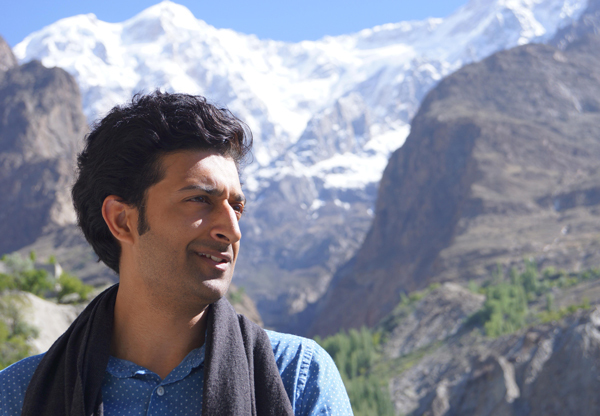
Adil Iqbal is Scottish Pakistani creative practitioner who works within cross-cultural contexts and uses collaborative practice, narrative art and digital media to discover new ways of creating a bridge between western and indigenous craft culture. He studied Textile Design and has a Master of Anthropology from the University St Andrews. Adil has been working with craft communities in Chitral Valley for over a decade and has produced numerous films and led several interdisciplinary creative projects. His work has been exhibited at the Royal Scottish Academy and Patrick Geddes Centre at Riddle’s Court. He currently runs Twilling Tweeds, focusing on cultural heritage as well as craft and design for well-being.
EDITING: COPYRIGHT © MOOWON MAGAZINE /MONA KIM PROJECTS LLC. ALL RIGHTS RESERVED.
TEXT: COPYRIGHT © ADIL IQBAL. ALL RIGHTS RESERVED.
PHOTOS: COPYRIGHT © CAMILLE DELBOS, © ADIL IQBAL. ALL RIGHTS RESERVED.
TO ACQUIRE USAGE RIGHTS, PLEASE CONTACT US at HELLO@MOOWON.COM
